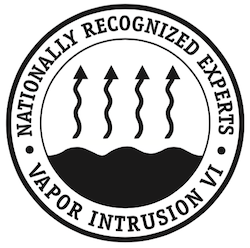 Following years of delay, the USEPA finally issued its Final Vapor Intrusion Guidance documents late last week, approximately 13 years after its draft was released. The draft guidance was issued in 2002, back when vapor intrusion exposure concerns were just beginning to emerge as part of the Federal Corrective Action Program. Subsequently, vapor intrusion was identified as a major exposure concern at many environmental sites where volatile organic compounds had leaked into the soil and groundwater. Migrating upward or laterally through soils and utility corridors, toxic vapors associated with industrial degreasers, dry cleaning solvents and gasoline have the potential for penetrating buildings, and invading the breathing air of nearby residences and workers. Major advances in the sciences of vapor intrusion exposure toxicology and vapor fate and transport rendered the EPA’s 2002 guidance virtually useless during the past several years. As the regulated industries across the nation, and public potentially exposed community, have awaited the Final Vapor Intrusion Guidance, many State regulatory agencies developed and adopted their own program guidance using the state of the science at the time of their publication dates. Many other agencies opted to await the EPA’s Final Guidance. With this recent release of the Final VI Guidance from the USEPA, the entire environmentally regulated community, the potentially exposed populations, the State regulatory agencies, and consulting scientists will be anxiously assessing its contents. Although drafts of the Final document have already been issued and public comments have been considered by the EPA, one can be certain that much effort will be spent in the coming months to realign current Vapor Intrusion assessment and mitigation practices with the new guidance.
Following years of delay, the USEPA finally issued its Final Vapor Intrusion Guidance documents late last week, approximately 13 years after its draft was released. The draft guidance was issued in 2002, back when vapor intrusion exposure concerns were just beginning to emerge as part of the Federal Corrective Action Program. Subsequently, vapor intrusion was identified as a major exposure concern at many environmental sites where volatile organic compounds had leaked into the soil and groundwater. Migrating upward or laterally through soils and utility corridors, toxic vapors associated with industrial degreasers, dry cleaning solvents and gasoline have the potential for penetrating buildings, and invading the breathing air of nearby residences and workers. Major advances in the sciences of vapor intrusion exposure toxicology and vapor fate and transport rendered the EPA’s 2002 guidance virtually useless during the past several years. As the regulated industries across the nation, and public potentially exposed community, have awaited the Final Vapor Intrusion Guidance, many State regulatory agencies developed and adopted their own program guidance using the state of the science at the time of their publication dates. Many other agencies opted to await the EPA’s Final Guidance. With this recent release of the Final VI Guidance from the USEPA, the entire environmentally regulated community, the potentially exposed populations, the State regulatory agencies, and consulting scientists will be anxiously assessing its contents. Although drafts of the Final document have already been issued and public comments have been considered by the EPA, one can be certain that much effort will be spent in the coming months to realign current Vapor Intrusion assessment and mitigation practices with the new guidance.
Check back with this blog often for the latest Vapor Intrusion developments, and follow our Director of Technical Services, Jeff Carnahan on Twitter (@JeffCarnahan1) for technical VI and risk communication issues.



